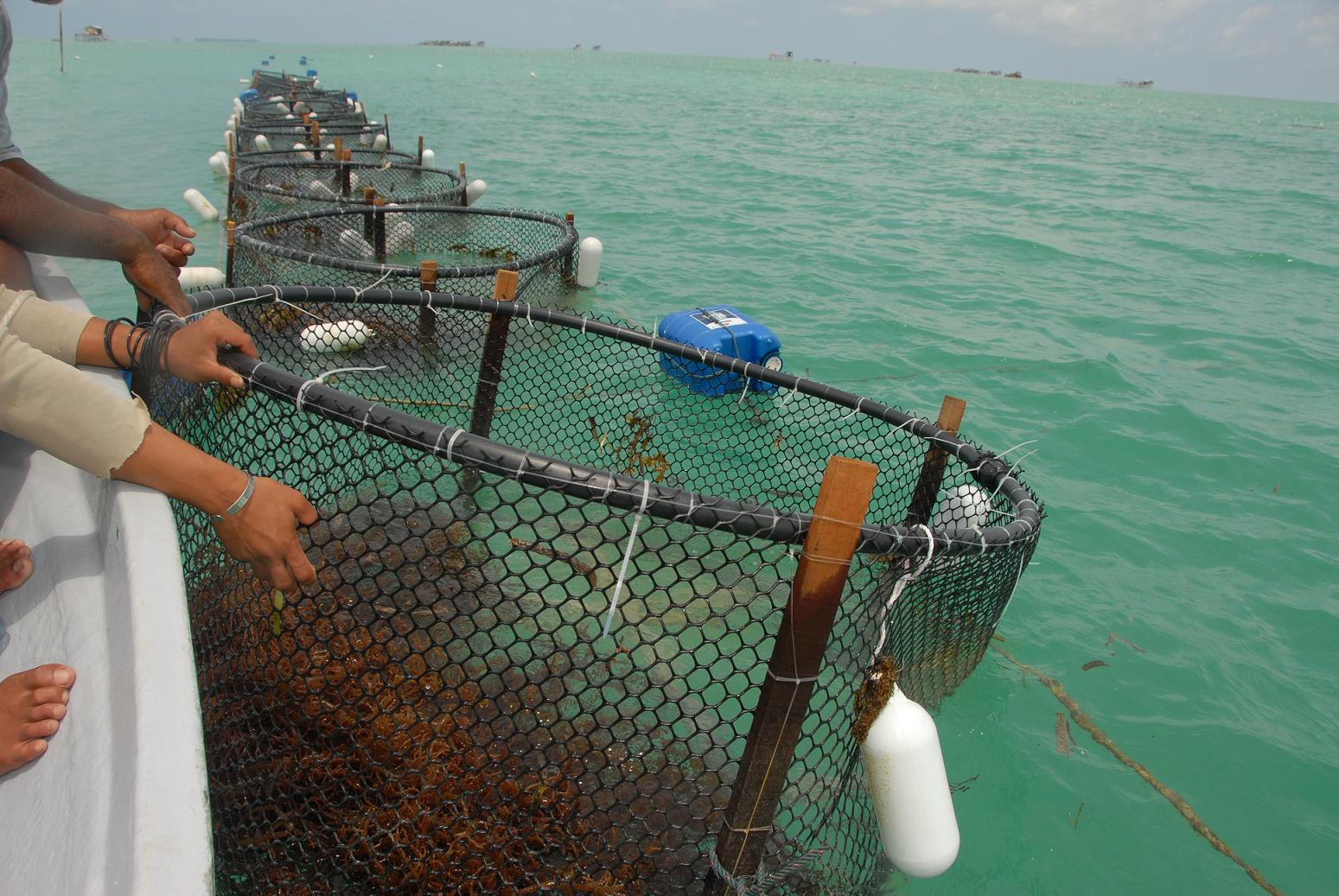Aquaculture Development
Last updated : 15/10/2015
 |  |
Activity 1 : Encourage Caged Farm Fishing in Sabah & Sarawak
1. Background
- Caged aquaculture have developed significantly since the last 20 years and is considered as one of the most popular method used in aquaculture especially within the area that have a sheltered coast or estuary.
- The caged farming system has developed progressively due to increasing demand and the problem of dwindling area suitable for caged farm fishing. The use of wooden raft is slowly diminishing and replaced by cage made from “high density polyethylene’ (HDPE) which could last longer in an exposed area in addition of reduced cost in maintenance.
- To encourage participation from off shore fishermen to marine caged aquaculture in order to increase productivity and improve the country’s fish output, it is suggested that a marine fish caged equipment support is provided. This activity is proposed for the state of Sabah and Sarawak considering that these two states is still behind in term of caged aquaculture marine facilities compared to the states in the Peninsular. In these states there are vast areas which are free from pollution and are suitable for caged farming.
- Type of fish species suitable for caged farming are as below:-
- Siakap (Lates calcarifer)
- Jenahak (Lutjanus Johni)
- Kerapu (Epinephelus taurirna)
2. Project Objectives
- Encourage and introduce the marine fish farming in cages technology to fishermen in Sabah and Sarawak.
- Utilise the coastal and estuary marine resources to maximise the production of fishes which is also environmentally friendly.
- Improve the country’s fish supply by increasing the caged marine fish aquaculture productivity.
- Provide employment opportunity to fishermen and their family members.
Activity 2 : Research Project – Pre-Possibility (TEMU)
1. Project Objectives
- Increase the production of marine farming especially amongst small scale fish keepers.
- The research is also expected to be able to assist LKIM in identifying new findings within the field of aquaculture.
- Identify the effectiveness in the utilisation of new input materials in the production of quality output.
2. Project Components
- Equipment available for the water treatment project using anolyte could not sustain the actual capacity of anolyte. Considering the level of equipment effectiveness within the pond water treatment is very good, additional support to the existing equipment is very much needed.
- Multiple Fish Species Farming Trial Projects will be implemented in order to increase the number of species suitable for marine farming thus eliminating our dependency on only one species. Fish keepers are expected to benefit from this project. At the current moment tiger prawn farming is no longer considered as a profitable marine culture. Other species such as the new white prawn will now become a focus as it provides handsome return.
Pages: 1 2




